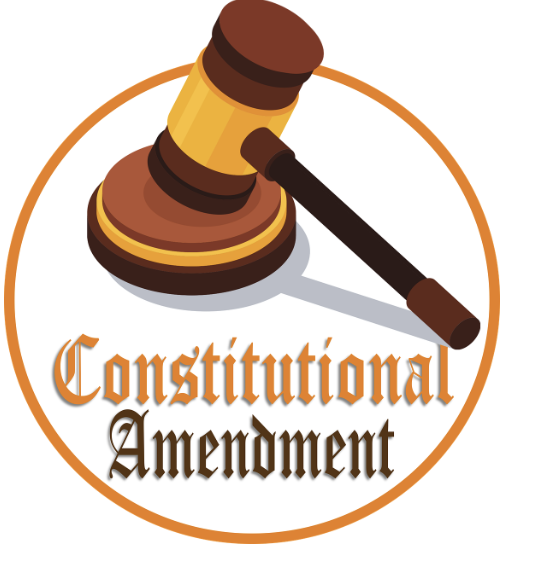
Bill of Rights WebQuest

Overview
Send students on a WebQuest to learn about the key components outlined in the Bill of Rights, their importance, and what makes them necessary. Students will examine and summarize the ten amendments in the United States Bill of Rights, then identify and explain the ten they feel are the most important and why.
Learning Objectives
Students will:
- Be able to define the key components outlined in the Bill of Rights.
- Be able to identify and explain which of the 10 they feel is the most important and provide a reason why.
Vocabulary
Vocabulary Words:
Constitution: The Constitution is a body of fundamental principles that govern a country, state, or organization.
- Amendment: An amendment is a change or addition designed to improve a text or piece of legislation.
- Individual: An individual is a single human being as distinct from a group, class, or family.
- Freedom: Freedom is the power or right to act, speak, or think as one chooses.
- Government: A government is the system of authority within a community of people.
Pre-planning
To prepare for this lesson:
- Familiarize yourself with the sites of the Webquest to make sure all links are active and working efficiently.
- Determine how you want students to submit their learning to you; fill in Google slide template, worksheet, graphic organizer, handwritten notes, google form, etc.
- Decide whether the students will work with a partner or individually.
- Make your own copy of this Webquest template to share with the students.
Note: If using Google Classroom or other student work-submission platforms, upload the links and assignment beforehand.
Accommodations
See the Accommodations Page and Charts on the 21things4student website in the Teacher Resources.
For students who struggle with reading articles and text, I suggest partnering them with peers.
Steps
Directions for this activity:
Activate students' prior knowledge by asking them what they already know about the formation of the US Constitution and its purpose.
Ask them a question that gets them thinking about our government and the legislative branch as fluid and not static. Example: If I had an idea for a story today and decided to sit down and write it, do you think it would be absolutely perfect on my first try? What if I wanted to write the story with my friends? Do you think we would ALWAYS agree on every character and storyline? NO…..then connect that to the founding fathers and the US Constitution. It is a document; it was pretty thorough and good, but it needed changes and improvements. We call those changes amendments.
Briefly give directions and your expectations for the WebQuest.
Give the students work time (It may take two class periods).
Check the assessment options below for this lesson. It includes a WebQuest template for the students to use.
Assessment Options
Different options for assessing the students:
- Observations
- Check for understanding
Have the students fill in a graphic organizer summarizing each of the 10 Amendments in the Bill of Rights. Then, follow up with a group discussion.
Upload a Google slide template for students to complete their learning as they go. Here is an example: https://docs.google.com/presentation/d/1BOhgpPs1js6MKiJXe9MDqKy_NG2UGX6Zsk-x9WFpSOM/edit?usp=sharing Followed by group discussion.
Have students number a blank piece of paper 1-11. Have them summarize each of the ten amendments on numbers 1-10, and on number 11, have them choose which amendment they think is most essential and explain why they picked it. Followed by group discussion.
After learning about each amendment, have students collaborate in groups to present a few amendments about it. Then, have student-led discussions about the importance of the particular amendment(s) their group is presenting.
MITECS Competencies & ISTE Standards
MITECS: Michigan adopted the "ISTE Standards for Students" called MITECS (Michigan Integrated Technology Competencies for Students) in 2018.
Knowledge Constructor
3c. Students curate information from digital resources using a variety of tools and methods to create collections of artifacts that demonstrate meaningful connections or conclusions.
Devices and Resources
Device: PC, Chromebook, Mac, iPad
Browser: Chrome, Safari, Firefox, Edge, ALL
App, Extension, or Add-on:
Websites:
Bill of Rights WebQuest template
How America Works
The Bill of Rights
US Constitution
CONTENT AREA RESOURCES
Integrated Arts
Students may create a poster or infographic about what they have learned about the Bill of Rights.
Social Studies
It is essential that students gain basic knowledge about the history of the United States Constitution and the Bill of Rights and how it applies to their lives today. This lesson allows students to learn about the necessary rights given to them by the founding fathers in the Bill of Rights and their responsibility to participate in government by becoming knowledgeable citizens.
Credits
This task card was created by Christine Partyka, St. Francis de Sales, in August 2024.


